A PID digital controller manages the operation of the grill making it super easy to use, with automatic temperature control.
Controller Hardware
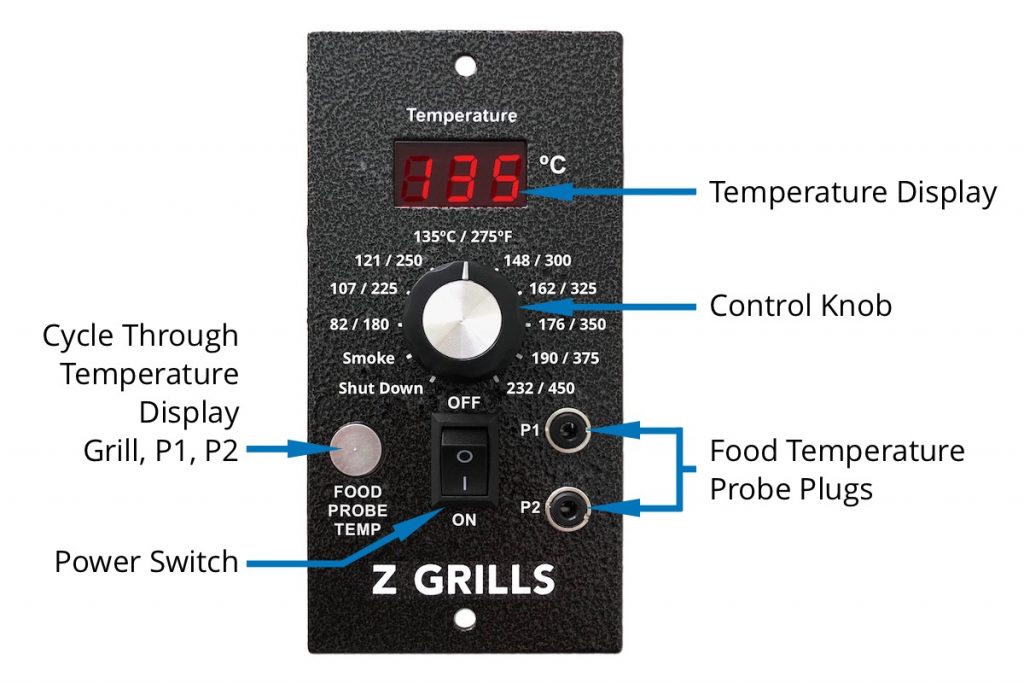
The controller has the following inputs and outputs, as shown in the diagram below:
- Power Supply (240V AC 50Hz)
- Temperature Reading (PT1000 RTD type)
- Auger Motor Power Supply
- Fire-pot Fan Power Supply
- Ignition Rod Power Supply
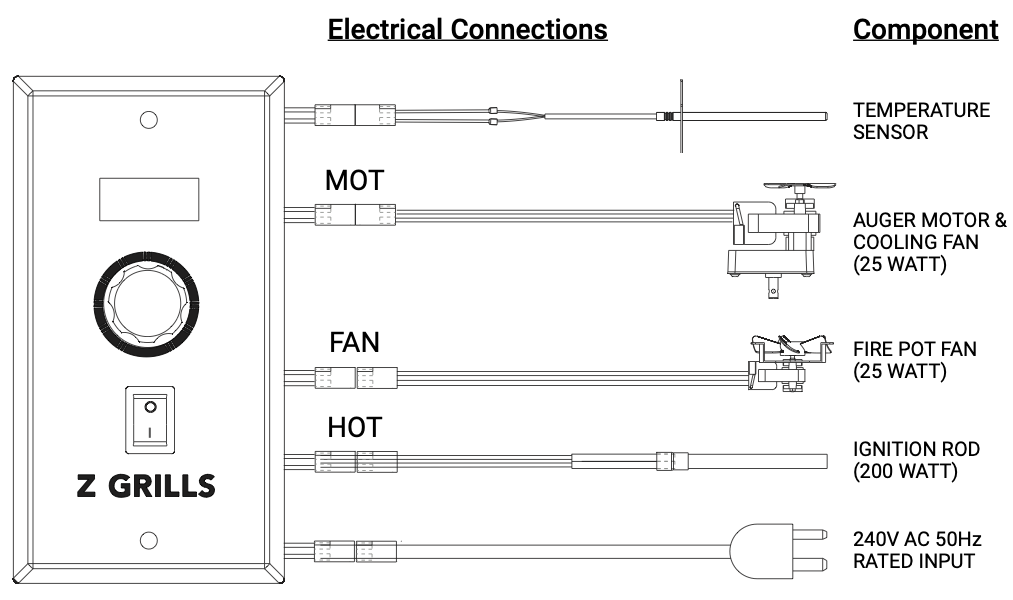
PID “Feedback Loop” Controller
Z Grills pellet smokers in Australia use PID controllers as they provide more accurate temperature control than more basic software controllers.
PID stands for Proportional Integral Derivative, which is a control logic that uses a feedback loop to find the optimal on/off ratio for the auger motor.
The mathematical formula of the control function is show below.

Looks complicated right! I can’t explain that formula, but if interested to learn more click here to visit the PID Wiki page.
Starting the Z Grill
Whenever the controller is switched from Shut Down to Smoke a set sequence of operation occurs to establish a fire in the fire-pot.
- The ignition rod is powered for 5 minutes, getting red hot to ignite the pellets
- The auger rotates intermittently to deliver pellets into the fire-pot
- The fan runs at full speed to deliver oxygen to the fire-pot
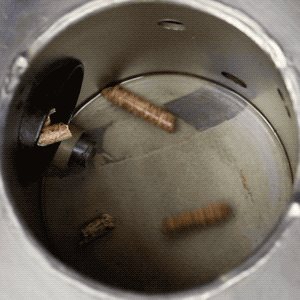
After about 3 to 4 minutes a big cloud of smoke will be released, a fire will ignite in the fire-pot along with a lovely roaring sound, and the temperature in the grill will begin to rise. It is as this point that the lid can be shut and target cooking temperature set.
Once the controller detects the temperature is above 60ºC (140ºF) it goes into automatic operation mode to reach the set temperature.
In hot weather, and when the target temperature is less than 121ºC, it is a good idea to leave the lid open for another minute to two after the roaring sound is heard. This allows some of the heat from the big initial dump of pellets to dissipate, reducing the initial temperature spike, which can easily exceed 100ºC. The temperature will slowly come back down, but that extra couple of minutes can reduce the spike and allow the grill to settle more quickly.
Leaving the lid open for too long after startup is not a good idea and can result in more pellets be delivered into the fire-pot and large temperature spike when the lid is finally closed.
Automatic Temperature Control
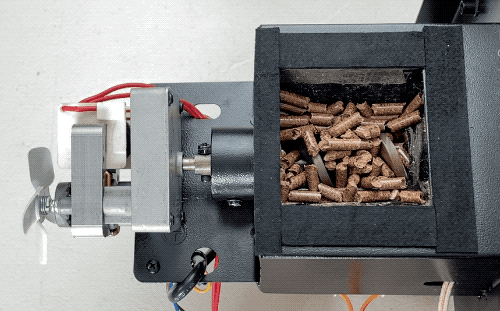
- Pellets are delivered to the fire-pot by the once auger every 2 minutes. At low temperatures the auger motor may only run for 10-15 seconds, delivering a small quantity of pellets enough to maintain low heat output. At the highest temperature target, the auger may run for 1 minute 45 seconds, then off for only 15 seconds.
- At the conclusion of each 2 minute cycle the PID control logic predicts the required on/off period for the next 2 minutes to reach or maintain the target temperature.
- Each time newly delivered pellets ignite, the temperature will rise and can slightly exceed the target temperature, resulting in temperature “swings” around the target.
- The temperature can swing as much as 10ºC / 20ºF above/below the setting, especially during the first 20-30 minutes of operation, after any temperature setting changes, or after the lid is opened. This is normal.
- Because the heat is indirect (not directly over the heat source), this temperature cycling will not adversely effect the cooking of food.
- The grill temperature is measured at the left side of the grill toward the top of the grill drum by the long metal temperature sensor. While the grill is first heating up, the temperatures on the main grill rack compared to the LCD display may differ by up to 10 to 15ºC (20 to 30ºF). These readings will get much closer over time as the temperature of the metal components and air inside the inside the grill stabilises.
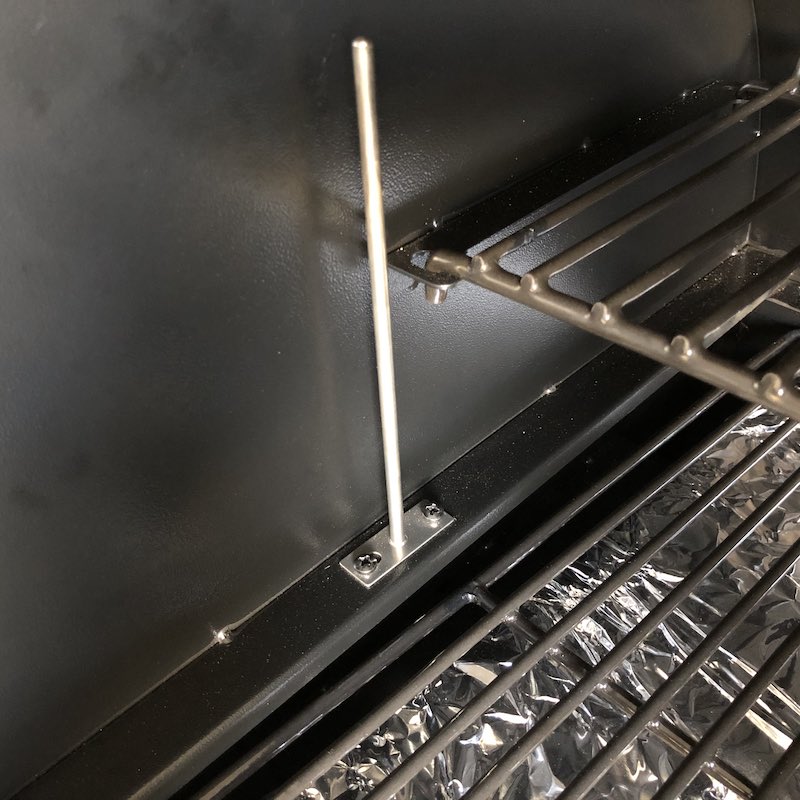
The graph below shows the temperature on the grill rack measured over a 5 hour cook. The swings shown are perfectly normal.
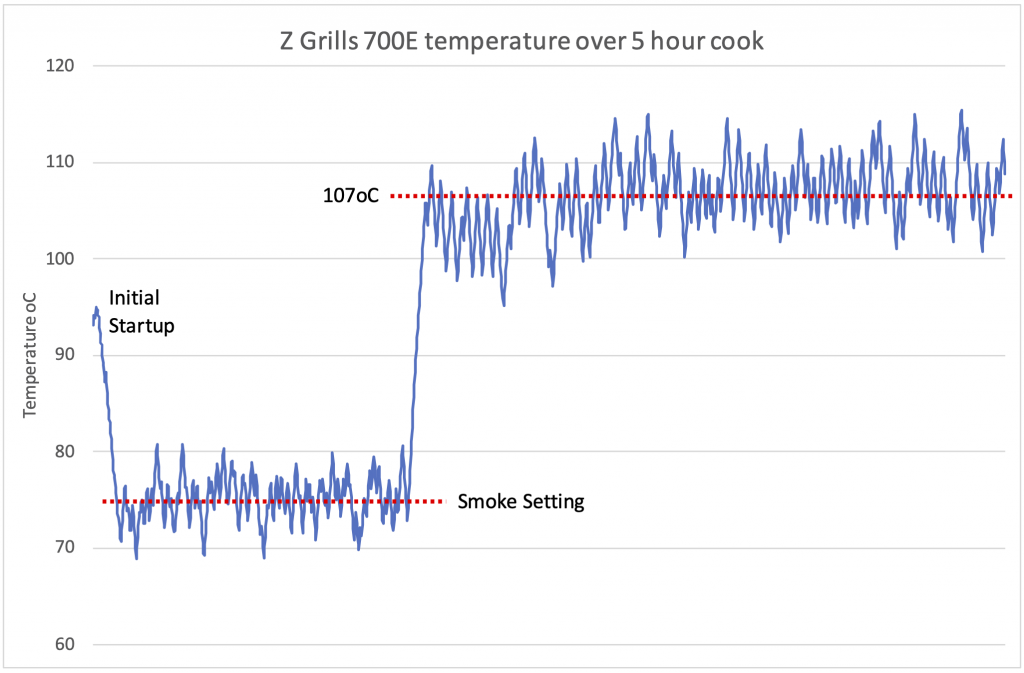
Temperature swings are impacted by a few factors as listed below.
- The temperature setting (more swings at lower temps)
- The weather (humidity, temperature and wind)
- The type of pellets being used (different heat output)
- Opening the lid too frequently
In the graph above, note the temperature spike at startup. This is due to the large number of wood pellets initially dropped into the fire-pot to establish a good fire.
Changing the Temperature Setting
The graph below shows how the grill temperature changes and stabilises after a new higher target is set. The temperature will rise quickly to reach the new level, overshoot the target by as much as 20ºC (40ºF) and then gradually stabilise over time.
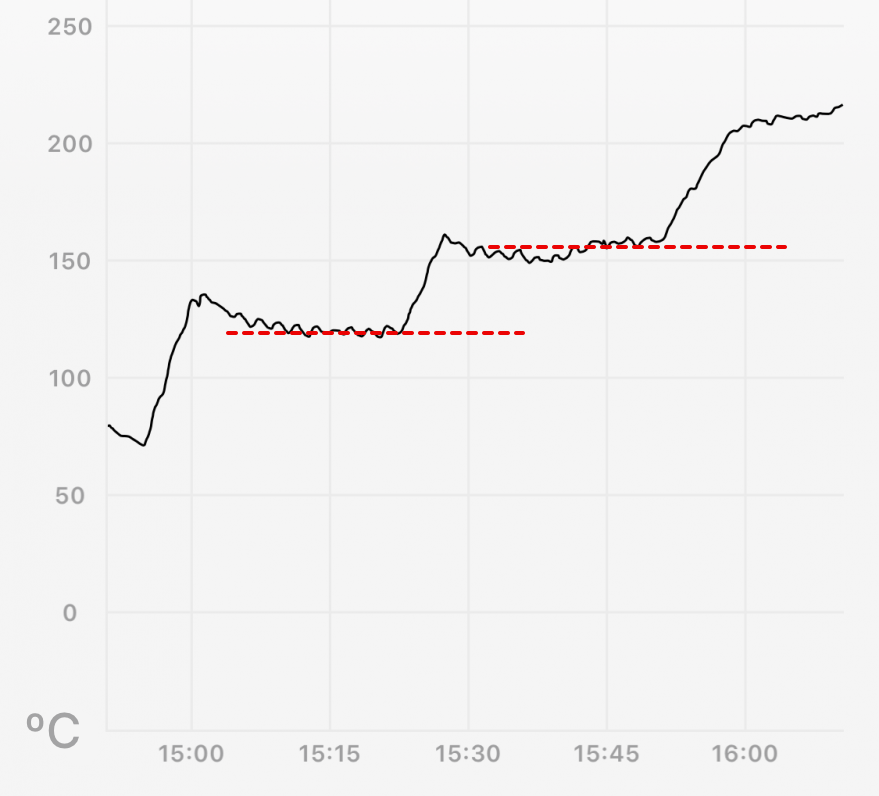
When a higher temperature setting is selected, the auger motor will run almost continually, dumping more pellets to increase heat output. Once the temperature approaches the target, the on/off auger periods will adjust until an ideal ratio is found (by the PID logic) to maintain the temperature.
When turned to the highest temperatures setting, the temperature may level out as it approaches the target. The exact temperature pattern will be a bit different for each grill model and is also impacted by the type of wood pellets being used (their heat capacity) and also the outside temperature (cold vs hot).
If changing from a high temperature to a lower temperature setting in hot weather, open the grill lid to let out some heat, otherwise it can take a long time for the temperature to drop. Be sure not to keep the lid open so long that the display temperature drops below the new target otherwise too many pellets will be delivered into the fire-pot.
Low Temperature Cooking
If planning to cook at a low temperatures (<135ºC / 275ºF), simply leave the lid open for a few extra minutes after the first cloud of smoke clears to release heat and avoid an initial temperature spike. This is more necessary in warmer weather (>20ºC / 68ºF) than when cooler outside.
High Temperature Cooking
If planning to cook at a high temperature (<135ºC / 275ºF), shut the lid as soon as the first big cloud of smoke begins to clear after startup. This will help get the grill to the desired temperature more quickly.
Using the Smoke Setting
While turning to SMOKE triggers the startup cycle, it is also a setting that can be used for normal operation. For a long cook the Smoke setting might be used for the first 1-2 hours (or longer) before adjusting the temperature to 107ºC (225ºF) or 121ºC (250ºF)
On the SMOKE setting the grill will swing in the range of 70 to 90ºC (160 – 195ºF). Such a large swing is required to help ensure a fire is maintained while maximising the amount of wood smouldering (for smoke release) that is achieved.
In hot weather it may be difficult for the grill to maintain such a low temperature range. If too few pellets are delivered to the fire-pot the fire can go out, indicated by the temperature dropping well below 70ºC.
In hot weather if the grill struggles to maintain the low temperatures and especially if a fire-out occurs, consider the following tips:
- Make sure the grill is out of the sun
- Put a water pan in the grill to speed heat loss (steam will carry away heat)
- Hold the grill lid slightly ajar with an object to increase heat loss
- Cook at 107ºC (225ºF), which is still suitable for long cooks and provides plenty of smoke.
To learn more about what to do in the case of a fire-out or LEr error, click here.
How much smoke is normal? Click here to learn more about how much smoke is normal.
Want more smoky flavour? Use a smoke tube with a stronger flavoured wood. Click here to learn more.
Temperature Issues
If the temperature is not stabilising at the setting, check out this page with troubleshooting tips.
Also remember these key points:
- Temperature swings around the target are normal
- The grill can take 15 to 20 minutes to stabilise at a new temperature setting
I want to understand even more!
Check out the video below which shows all the key components and how they work together.
